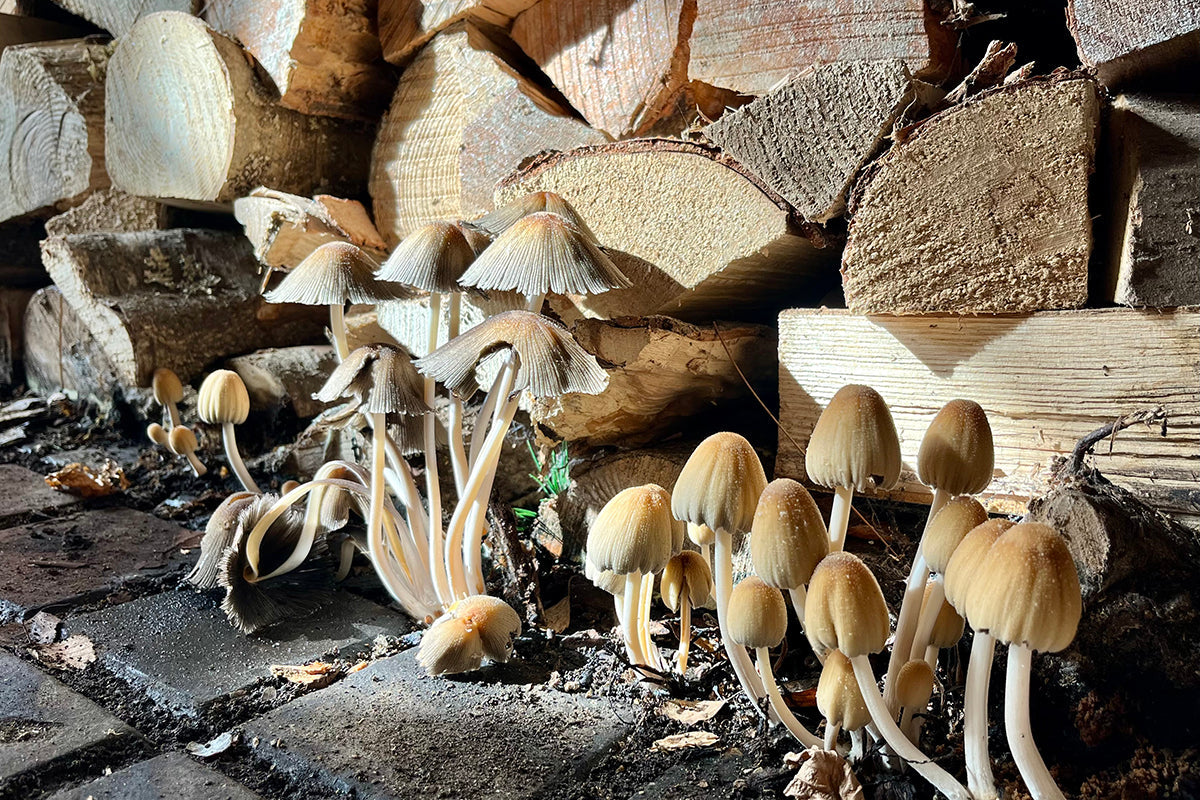Woodpile wonders - garden fungi

Most of us with woodburners or an open fire will have a woodpile or log store located somewhere within the garden. A well organised stack of logs can be a work of art but can also become a welcome home for mammals and insects. Mice, hedgehogs, wrens, worms, beetles, woodlice, and snakes have all made homes in our log pile at some point. This month it was the turn of fungi to make use of our well seasoned timber.
Fungi reproduce from spores, a quite ancient method of reproduction that first emerged on earth approximately 470 million years ago. What is amazing is that fungal spores are incredibly widespread and ubiquitous in our atmosphere. They occur from ground level up to the stratosphere 20+ kilometers above Earth and they occur in areas ranging from rainforests to the polar regions. Their concentrations vary dramatically however. In urban areas there are 1,000-10,000 per cubic meter and in more vegetated regions their numbers can be up to 100 times higher. Usually feeding off dead or decaying plant material, some have also adapted to feeding off living plant or animal tissues. It’s even estimated that we can breathe in as many as 100,000 spores a day.







